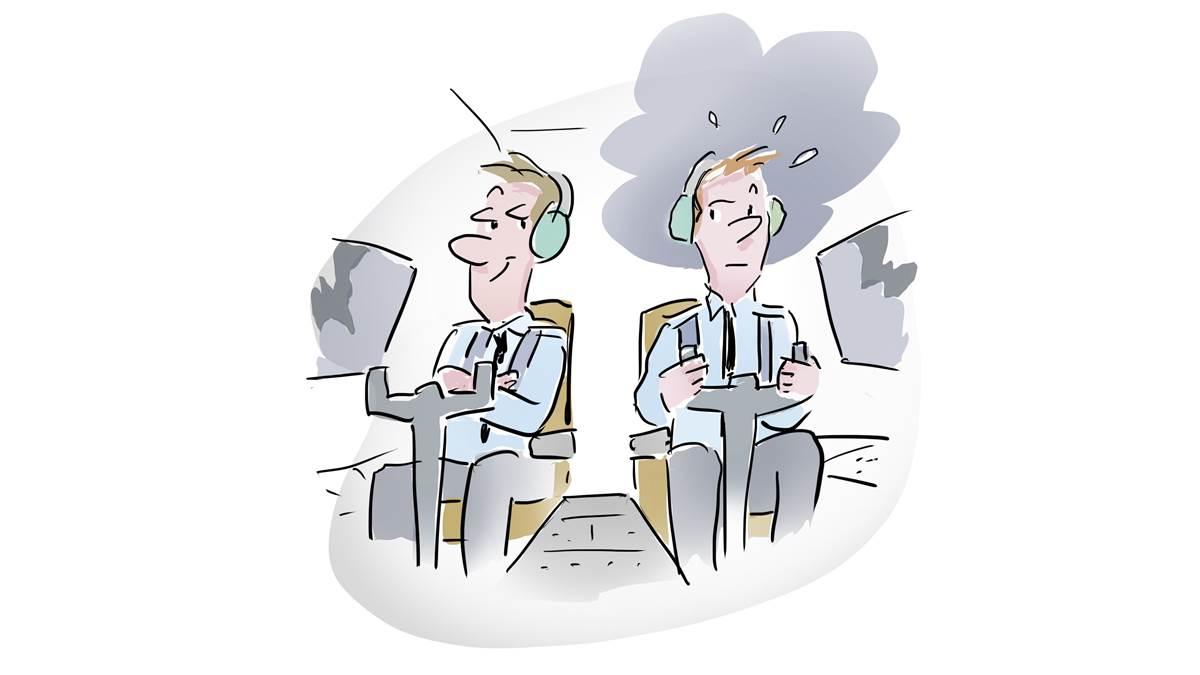Low weather, tense cockpit
Pressure to perform
By Rob Mark
Flying is always about learning, whether that’s clearly stated or not. In small personal airplanes learning usually happens at a monthly pilot’s association meeting, an FAA safety seminar, during a flight review, or when flying with a friend after they’d installed some new gee-whiz avionics gadgetry.

As people move up the ladder to larger, more complex turbine aircraft, the need for regular addition training isn’t left to the whims of a GA pilot remembering to schedule a flight review every 24 months. Normally, Part 135 charter training never called for us to attempt a maneuver that could be deemed dangerous. Every so often, though, life would toss a curve ball that kept things, ahem, interesting.
One morning I was called in for a trip in the Cessna Citation 650 from our Chicago base with no passengers to Denver to pick up five people and fly home. I was partnered with another captain, and dispatch decided he’d have overall responsibility for the flight. This captain and I had a little history. We simply didn’t play nicely together, and I’d been told early on the company would avoid pairing us up whenever possible. Today, though, dispatch had everyone flying, and there was no other option.
As I neared the airport, the visibility began dropping. By the time I pulled into my parking space I could barely make out our hangar a few hundred feet away. I walked up to the dispatch desk and looked at the paperwork and heard the other guy—let’s call him Dave—call my name. “Looks like we’re going to have some fun today, buddy.”
“Each centerline stripe on a precision runway is 120 feet in length. The distance between each stripe is 80 feet.” —Aeronautical Information Manual“It’s always fun flying with you, Dave,” was all I could muster in response. I went in the computer room to check the weather. I’d at least have that in my back pocket before I went out to look over the airplane. Dave followed me in.
“What are you checking the weather for, Rob? We’re going anyway,” he said, followed by one of his Snidely Whiplash grins.
Under Part 135, commercial operators were required to observe the airport’s published takeoff minimums and published obstacle departure procedure departing Runway 23. I looked him in the eye and said, “We can’t take off in this weather, Dave. We should wait till this burns off.”
He smiled and said, “You’re right, we can’t take off in this kind of visibility—if we’re 135. We’ll depart under Part 91. Since you’re in the left seat, time for a little low-vis training.” I thought he was nuts.
“I’ve never tried one of these.” I should have flat refused, but I didn’t.
As I walked out to the airplane, I could barely see the jet parked next to us. Before I knew it, we were taxiing to Runway 23. I could feel myself sweating as I tried to keep the 650 on the taxiway centerline. At the end, Dave asked if I was ready, and I said not really. “How is this going to work?”
“Pretty simple,” he said. “You’ll line up on the runway and hold the brakes. Bring in the power slowly and make sure you keep this thing on the centerline.” With nothing else moving on the airport, the takeoff clearance came quickly. They only asked us to report airborne since they couldn’t see us. I took a deep breath and Dave said, “Hey, Rob. You OK over there?” I could distinctly see two centerline stripes and a portion of a third. As we began to roll my feet were ready for even the slightest needed corrections. Another deep breath and I slowly advanced the power levers.
“Airspeed alive,” I heard as I waited for the V1 call.
“Now don’t screw this up Rob. I wouldn’t want to take the airplane away from you,” Dave counseled. His sarcasm only added to my anxiety level. Why had I gone along with this crazy idea? The centerline was simply a white blur. Never again, I said to myself as I heard “rotate.”
We were soon airborne, and I called for the gear. Perhaps we’d been in the air five seconds when we broke out of the fog. I continued the climb and we leveled at FL350. Dave and I never spoke on the entire trip. To top it off, I made one of the worst landings of my career. It was a hard one.
“What kind of landing was that?” Dave spit out. “We’ll probably need a mechanic inspection before we go back to make sure you didn’t break the airplane.” My hand rose momentarily from its position on the throttles with a dismissive response.
Rob Mark is an aviation journalist and the publisher of JetWhine.com.


